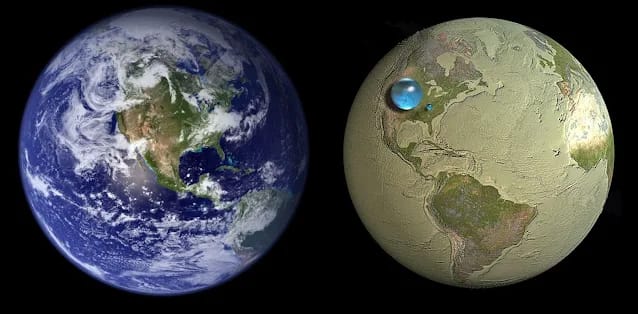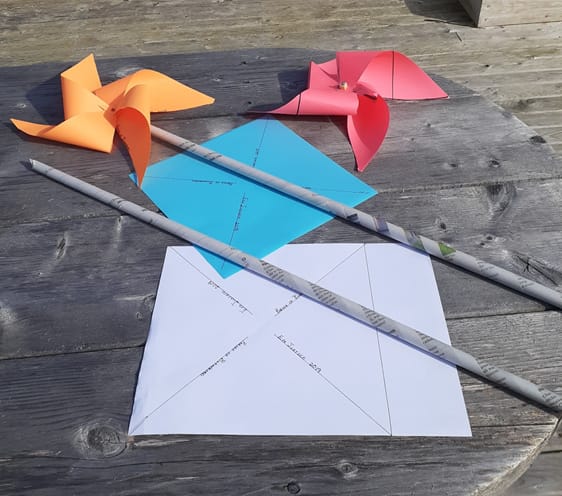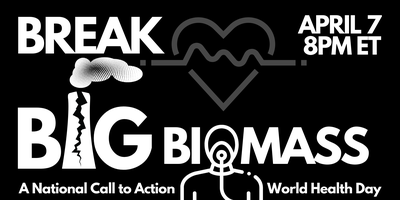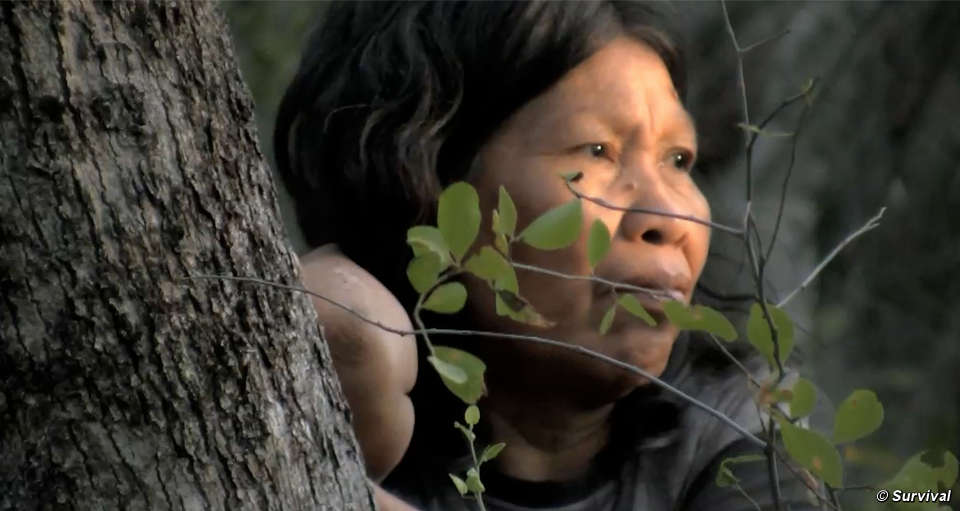- DEN Enews
- Posts
- DEN Enews
DEN Enews
I Will, with God's Help

The 6th promise of the Anglican Baptismal Covenant
Another roller coaster week in our world of unrest and uncertainty. Promises made. Promises amended. Some good. Some yet to be determined.
This editor was encouraged by the words of Arlene Dickinson on the CBC Cross Country program on Sunday. Arlene said, “We need to protect our resources. We need to protect our land.” Of course, she was speaking of our nation as a whole but it resonates for our province.
It all depends on the resources you wish to protect. Fracked gas or well water? Pristine environments and healthy communities or what lies the ground? Filling the pockets of American investors versus long term benefits to our population?
Does it make a difference to your value-set if the investors are all Canadian? American?
Do we believe our Premier when he says: As always, we remain focused on what is in the best interests of Nova Scotians and believe an open and accountable government is part of that. (from his Facebook page)
Wise words from the David Suzuki Foundation:
Wise leaders would look to better opportunities — especially in the growing, increasingly lucrative clean energy transition. (Newsletter dated Feb 21)
Our mission is not to debate politics. Our mission is to encourage each of you to follow the one passion that keeps you awake at night and actively strive to make a difference.

Clergy Coaching Network
From SOOF - Save Our Old Forests
This week has been a bad week for democracy and the environment in Nova Scotia. The Houston Government tabled two big bills in the legislature on Tuesday, along with the budget. They will try to pass them into law in the coming days. Please, please call or write to your MLA to express your strong opposition to The Government Organization and Administration Act (Bill 1) and An Act Respecting Agriculture, Energy and Natural Resources (Bill 6). Ask them to vote against these bills as they stand. Bill 1 removes essential democratic oversight. If you were feeling Nova Scotia offered a haven from the mayhem going on south of the border, sorry. Bill 6 ‘would repeal the Uranium Exploration and Mining Prohibition Act and amend the Petroleum Resources Act to allow fracking for natural gas. The moratorium on fracking was enacted in 2014 following the then-Liberal government noting that there wasn’t enough public support to justify the industry. There has also been a ban on uranium exploration since the 1980s, prompted by public concern over health impacts and contamination, and a full moratorium since 2009. Nova Scotia is not the only province that has disallowed uranium exploration — British Columbia and Quebec also have bans in place. Meanwhile, Saskatchewan is the world's second-largest producer of the element, the mining of which has been called an “established cause” of lung cancer by researchers. In the lead-up to the 2014 fracking moratorium, polling conducted on behalf of the Council of Canadians found that nearly 70 per cent of people in the province support keeping the moratorium in place, unless an independent review found there was no risk to drinking water, climate and human health.’ (Cloe Logan, Canada’s National Observer. https://www.nationalobserver.com/2025/02/20/news/health-climate-nova-scotia-fracking-uranium-mining The government did not mention any plan to lift these bans in the last election. Click the links below to learn more about the concerns related to Bill 1 and Bill 6… |
Concerns abhttps://drive.google.com/file/d/1_m-w3t2NHzyzqCtNYCQRb0_G9yr3Nykj/view out Bilhttps://drive.google.com/file/d/1raZqT3QkmKh50FZk-l7dB-1OVhLxC0hb/viewl 6 |
Kairos has resources on the effects of Fracturing and these documents can be forwarded to you by simply emailing us. [email protected]
Do you realize the dangers? We do not need fracking and uranium mining in our province. Write to your MLA as well as to the Premier [email protected], with copies to Claudia Chender, Leader of the Opposition 902-424-4134 or [email protected] and Derek Mombourquette, Leader of the Liberal Party 902-562-8870 or [email protected]
Did you know? Fracking as well as Green Hydrogen projects require massive amounts of water. Fresh water is a finite resource and fracking renders the water used unusable for human consumption, even as groundwater.

Illustration showing all of Earth’s water, liquid fresh water, and water in lakes and rivers. Credit: Howard Perlman, USGS/illustraion by Jack Cook, WHOI
The biomass industry is burning trees for electricity and falsely calling it a clean energy solution. But do you know about the devastating health impacts that people living close to the plants are experiencing?
This is your opportunity to connect with people from around the world fighting this dangerous distraction and take meaningful action to protect forests and the health of our communities.

A reminder of the EV charging station kick-off meeting Feb. 26, from 2-3 pm Atlantic on Zoom https://us02web.zoom.us/j/85737031876... Looking forward to seeing you tomorrow. Rev. Marian

with thanks to Eva Evans & Jesse Hamilton
“Unless our lands are protected, our uncontacted relatives who want to stay in the forest will soon no longer be able to survive there”. This is a quote from a leader of the last uncontacted tribe in South America outside the Amazon. The situation of the Ayoreo-Totobiegosode people is critical as bulldozers clear more and more forest land for cattle ranchers. When these people were first discovered decades ago, they faced manhunts and death. Some managed to escape to the trees, and here they remain uncontacted. Now well-funded ranching operators are putting up cattle fences, creating reservoirs for livestock, bulldozing roads, and clearing this forest. The Inter-American Commission on Human Rights has ordered Paraguay to protect the Ayoreo's land, but international support is needed to push for this protection. Send an email to Paraguay's government urging them to prioritize protection over destruction.
Wildlife has been under attack in states like Montana and Wyoming. These places have been petitioning to remove animals from the Endangered Species Act protection so that they can be persecuted and killed. Grizzly bears in the Greater Yellowstone and Northern Continental Divide ecosystems are threatened by these changing man-made policies. The U.S. Fish and Wildlife Service recently denied the states’ petitions, but while proposing new directives that give more latitude to kill grizzlies. Add your name to this petition to show people are watching and to help push for these iconic bears to get the protection they need to survive and thrive.
February 15th was World Pangolin Day! Pangolins are one of the most unique mammals in the world. These nocturnal creatures reside in Asia and Africa. They rely heavily on hearing and smelling, have poor vision and no teeth, powerful front claws, tongues similar to anteaters, and large protective scales made of keratin; just like our fingernails. Their diet consists of ants, termites, crickets, flies, and other insect species, which helps prevent the overpopulation of insects and protect forests from termite destruction. Heavy deforestation and poaching, mainly for traditional medicine, are main threats for the pangolin. They are the most trafficked mammals in the world. In just ten years, it’s estimated that 1,000,000 pangolins have been poached. Sign the petition to help the critically endangered Philippine Pangolin, and learn more about the plight of the pangolin and this annual day that helps bring awareness and support.

with thanks to Claudia Zinck
Circular economy
Grandma knows we are all tired of hearing of Mr. Trump’s tariffs, but I need to put a bit of that into a whole bunch of good. It is a story about circular economies.
Grandma loves a good story is about how she can buy something, use it, then properly dispose of the container that gets recycled and/or repurposed to make more containers to hold the item again.
The easiest example is glass or plastic beverage bottles. If we run out of drinks on a road trip we purchase some at a store. Then we take the glass or plastic back home and later to our Enviro Depot and get our deposit back.
The folks at our Eviro Depot love to see me come in with all the items counted and tallied for them. Anything I am not sure of they can answer for the next time.
The Enviro centre sends the plastic to a Nova Scotia plant that makes more bottles to hold the beverages.
Denmark has a similar system but has an easier collection system.
The thought process in Denmark is that if you sell products in plastic bottles, glass bottles or cans, then you must have a way to recycle them. It’s the store’s responsibility.
At grocery stores, you either hand feed or open a bin and pour in your plastic, tin and glass. Close the bin and the machine starts counting the number of bottles and your payment. You get a receipt for the amount you recycle.
That receipt can be paid out in cash or reduce your grocery bill at the cash register. Many just take their recyclables to a central area where the machine can send their credit to their bank.
Instead of the thought process of sorting and making that one big trip to the enviro depot, you can take along the recyclables every time you go to the grocery store.
If you are out for a walk and buy a drink there are ways to depose of the container. Trash cans have a place on the side to hold bottles and cans so anyone can gather them and take them for the refund. Recycling or “pent” as they know it is accepted as a way for non-profits to raise cash.
If I was out for a day trip in Denmark, I may get a take out for lunch. My beverage container could be put into a machine at the enviro bins that are in many places in every village. Maybe I don’t want to be bothered with a receipt so I have the option of hitting donate. Those donations pay for new machines to collect more plastic and cans.
Since this started in Denmark in 2002, the return percentage has reached 93%. 1.9 billion bottles and cans were deposited for reuse.
Better still is knowing that making that can or bottle from recycled materials uses 95% less energy than from new materials.
So how does Nova Scotia compare to Denmark? Not as bad as you may think.
We need to gather those big bags, stuff them in the car and drive 20 km to cash them in. This would also include the recycling that takes place curbside by those not wanting to to drive to the depots. Still, in 2024 Nova Scotians recycled 441 million beverage containers, which is roughly 80% of beverage containers sold in Nova Scotia.
That is a high number. Sure we can do better but to recycle 80% of the plastic and metal containers sold in our province is a decent dent into the issue.
From all that is collected, 43% are re-processed in our province. They make more plastic bottles but, they also make car parts from the waste. Glass bottles are ground and used in septic fields.
Three per cent is turned into roofing materials and other containers to hold products. Only 3% are shipped overseas.
54% are aluminium cans that go to the United States to be made into new cans that get sent back up to Canada to be filled (and then returned to the US to be sold). That is where Mr. Trump’s tariffs may slow our environment and circular economy.
We know Mr. Trump is eliminating green actions in his own country. (Drill, baby drill). Those tariffs will slow down the aluminium travel. If we could build our own plant here we would not need that trip to the US. Grandma feels optimistic that we are bound together to do things ourselves. No reason why we couldn’t have a plant here.
Craft Time
I fully admit that I am recycling from a previously posted craft. Grandma is hoping that we have lots of new people receiving our newsletter and maybe they never saw this and could use it for a spring event. Spring is coming. Just hold on a little bit further.
Pinwheels
You will need
Paper
An old eraser cut into small pieces and perhaps a bead.
Stickpins
A sheet of newspaper or flyers.
First, make your wand for the pinwheel. Take a whole sheet of newspaper or flyer and starting at one corner roll the paper around a pencil. Some may remember when we did the same thing to make newspaper fire starters. Loosen your paper a bit and let the pencil roll out. Tape the rolled newspaper and put it aside.
Get a square of paper. Remember we can make a letter-size sheet of paper into a square by folding the lower right corner of your paper over to the left side. Crease and cut off the excess
Fold the square the opposite way so the two creases make four sections on the paper.
Mark about an inch out on each crease from the centre and cut from the outside into that mark near the centre
Cut an eraser into small pieces, three for each pinwheel. (You can use a small bead on the front of the pinwheel if you have them.
Put the pin through one bit of the eraser to make a spacer. Holding your left thumb (or right thumb if left-handed) into the center of your paper, place the right hand corner of each triangle of paper into the middle and push the pin through all wings and the middle of the paper adding another piece of eraser back of the pinwheel loosely.
Push the pin through the newspaper wand and add another bit of eraser.
Now if you are overprotective like Grandma you push the pin through the last eraser bit and take pliers to bend it downward. Tape that sharp pin to the back of the newspaper wand.
Find different materials to make your pinwheels like 2 inch brass brads for the middle.
Could you make the pinwheel from the flyer paper? What happens if you use Bristol board? What else could be used for the wand? How could we decorate the pinwheel to make colours swirl? All fun things to do anytime.


Something to Eat
These cold days make Grandma want to cook meals long and slow. A slow cooker is great but oven meals warm the house more. Instead of a chicken pot pie, I made a “Cottage Pie”. Strips of steak were the original meat, however, a pack of hamburg worked well for me. Putting it in a pie crust made it look so good besides a great taste. You can mix up the middle and put mashed potatoes on top like we do in a shepherd’s pie. Any warm combination on a cold night is welcome.
Cottage Pie
The Pie Crust
2 cups flour
A shake of sugar
½ tsp baking powder
Dash of salt
½ cup cold butter (or use the same amount of shortening)
4-6 tbsp cold water
Cut the fat into the flour, and add the rest including water (or may need more water) until doughy) Set aside.
The Filling
1 pack hamburg (after being browned and cooled)
1 onion
2-3 carrots
2-3 potatoes cubed small
1 cup frozen peas
1 tin mushrooms
Any leftover veggie in the fridge
2 tbsp Worcestershire sauce
1 beef oxo cube or granules
1 tsp parsley
1 tsp. Italian or /and Montreal spice
Salt and pepper
1 cup beef broth
2 tbsp flour or cornstarch
If using pastry roll out half in the bottom of your biggest pie plate or make two smaller pies on aluminun plates
Mix the middles together and fill the pie plates
Add a pastry top or cover in mashed potatoes. Bake about an hour at 350 or over two hours at 200 to 250
Below is my pie just before the top was put onto it






